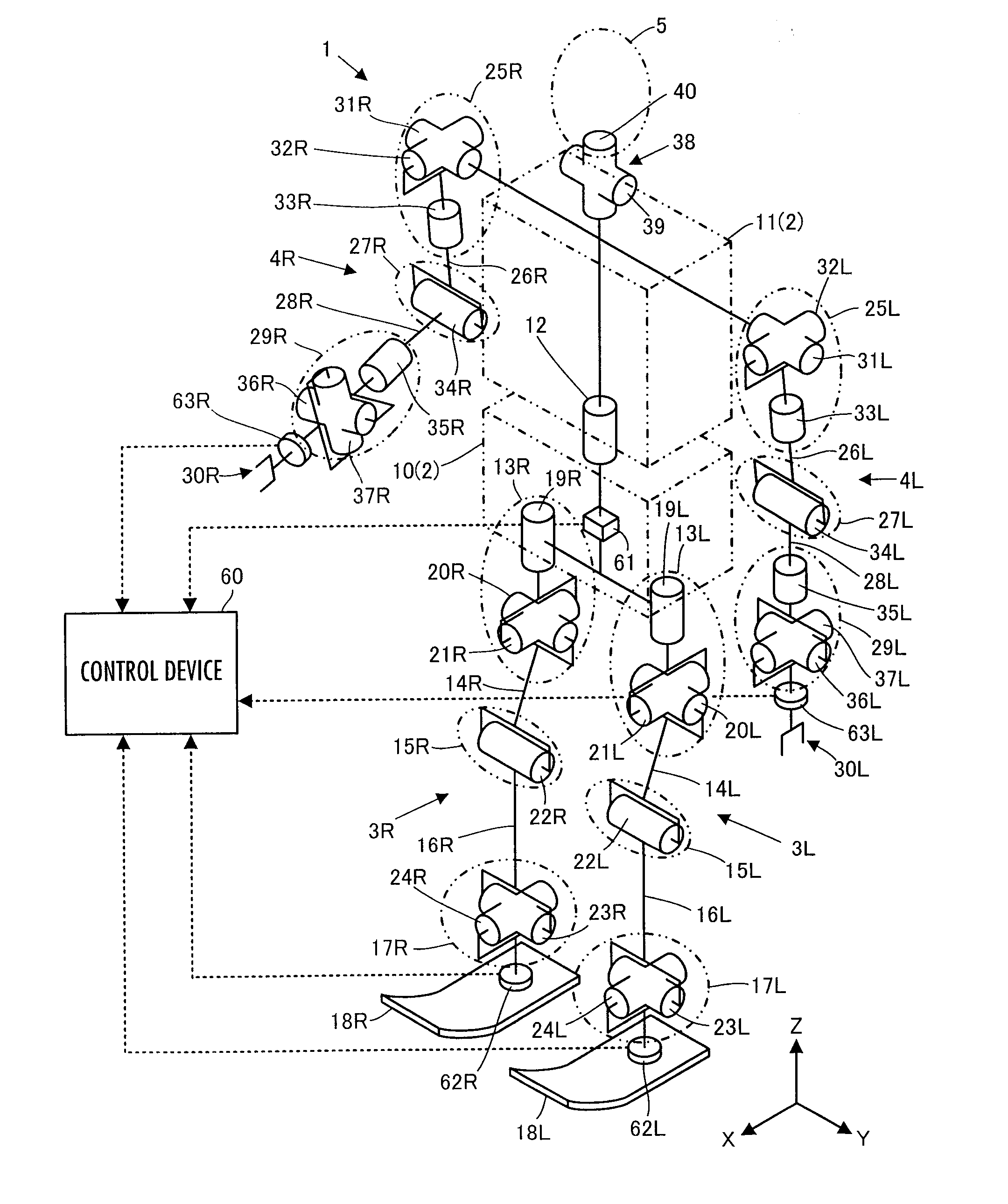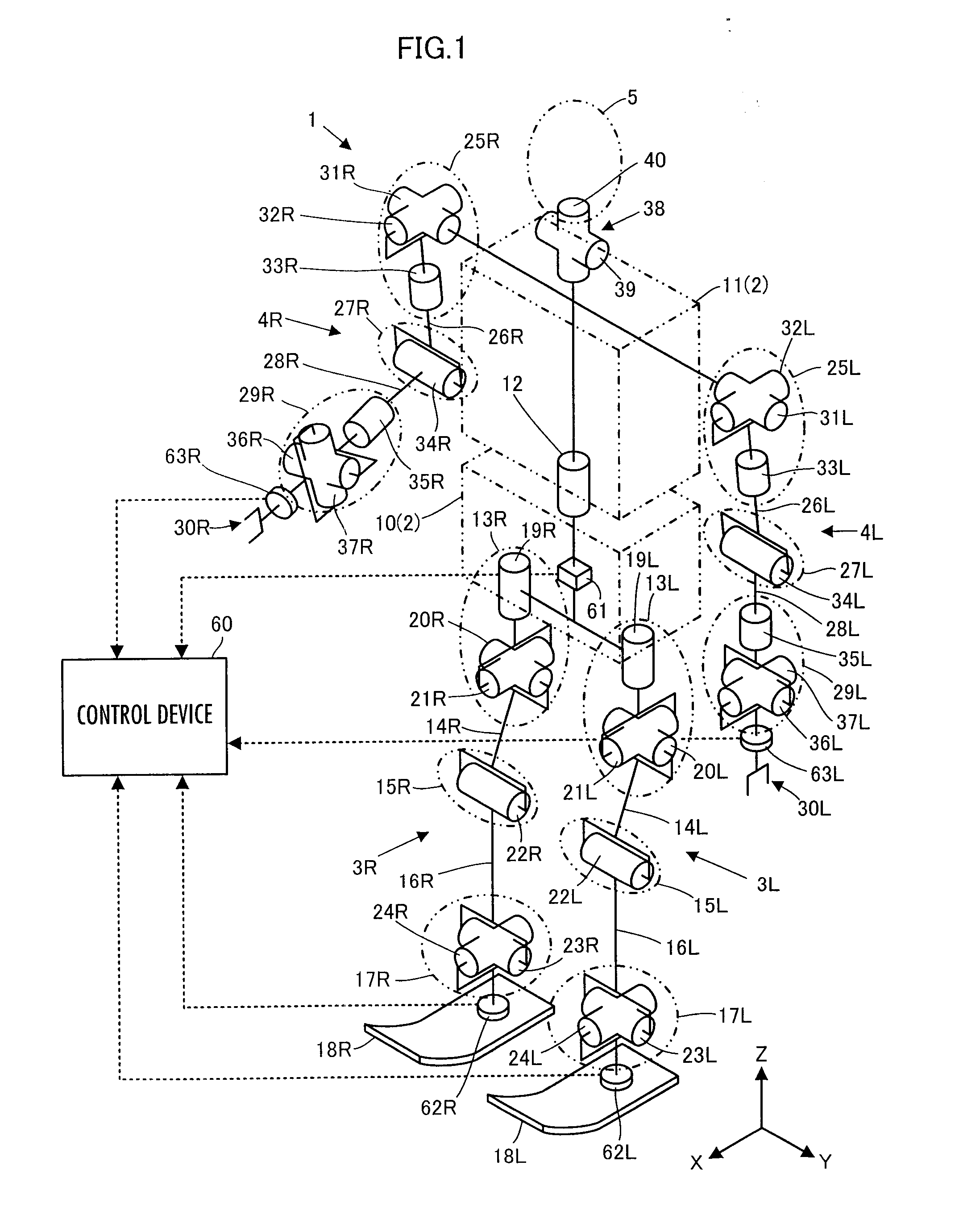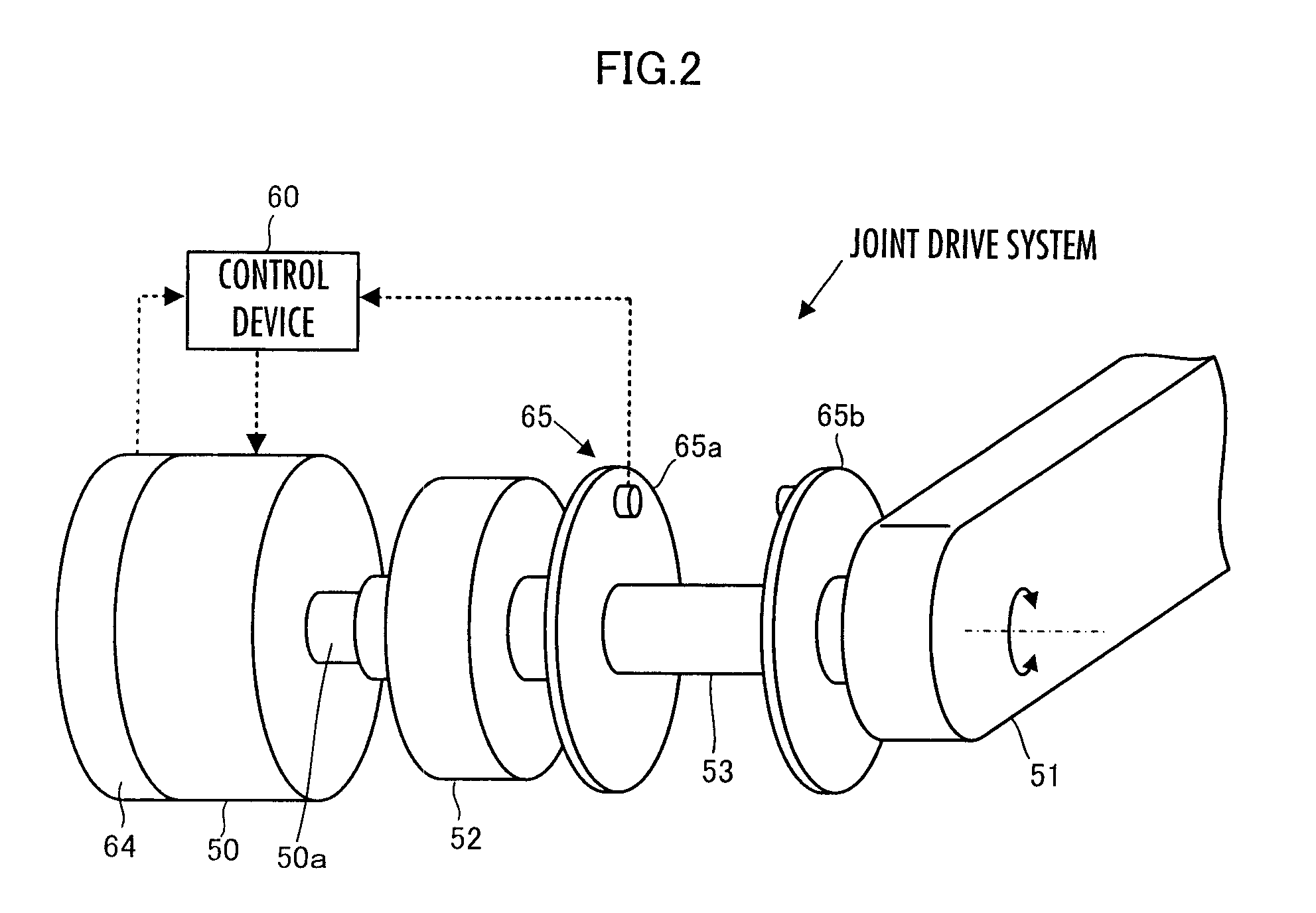Control device for robot
a control device and robot technology, applied in the field of robot control devices, can solve the problems of inconvenient presentation of poor flexibility in response to a change in an external force acting on the robot, difficult to maintain a stable posture of the robot, and significant restrictions on the actual motion of each joint of the entire robot, so as to enhance the flexibility of the motion of the joints
- Summary
- Abstract
- Description
- Claims
- Application Information
AI Technical Summary
Benefits of technology
Problems solved by technology
Method used
Image
Examples
first embodiment
[0082]The following will describe a first embodiment of the present invention with reference to FIG. 1 to FIG. 5.
[0083]FIG. 1 schematically illustrates the skeleton framework of a robot illustrated in the present embodiment. This robot 1 is a bipedal mobile robot as a legged mobile robot. The robot 1 is roughly constituted of a body link 2, a pair of right and left leg links 3R, 3L, a pair of right and left arm links 4R, 4L, and a head 5.
[0084]In the present description, a member on the right side observed facing to the front of the robot 1 or a variable indicating a quantity associated with the member will be suffixed by a character “R,” while a member on the left side observed facing to the front of the robot 1 or a variable indicating a quantity associated with the member will be suffixed by a character “L.” However, the characters “R” and “L” may be omitted unless it is particularly necessary to distinguish between the right side and the left side.
[0085]The body link 2 is consti...
second embodiment
[0315]A second embodiment of the present invention will now be described with reference mainly to FIG. 6.
[0316]The present embodiment differs from the first embodiment in the method for setting a contact portion representative element in the processing by a desired joint driving torque determiner 72 of a control device 60. Accordingly, in the processing by a desired joint driving torque determiner 72, the processing by a contact portion Jacobian matrix determiner 82, a control input determiner 85, and a compliance controller 86 is partly different from that of the first embodiment. The rest of the processing by the desired joint driving torque determiner 72 (the processing by a basic parameter group determiner 81, a state amount Jacobian matrix determiner 83, and a state amount desired value determiner 84), and the processing by a gait generator 71 and a joint drive controller 73 is the same as that in the first embodiment.
[0317]Therefore, the description of the present embodiment w...
PUM
 Login to View More
Login to View More Abstract
Description
Claims
Application Information
 Login to View More
Login to View More - R&D
- Intellectual Property
- Life Sciences
- Materials
- Tech Scout
- Unparalleled Data Quality
- Higher Quality Content
- 60% Fewer Hallucinations
Browse by: Latest US Patents, China's latest patents, Technical Efficacy Thesaurus, Application Domain, Technology Topic, Popular Technical Reports.
© 2025 PatSnap. All rights reserved.Legal|Privacy policy|Modern Slavery Act Transparency Statement|Sitemap|About US| Contact US: help@patsnap.com



